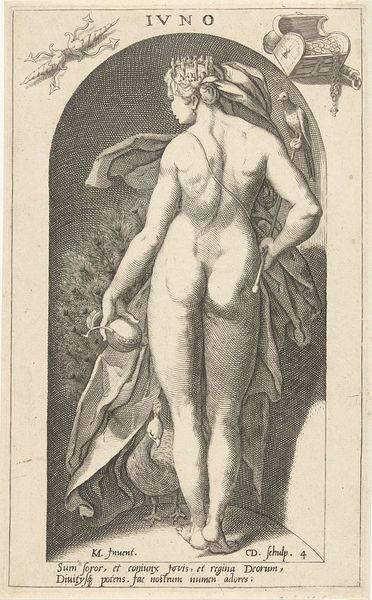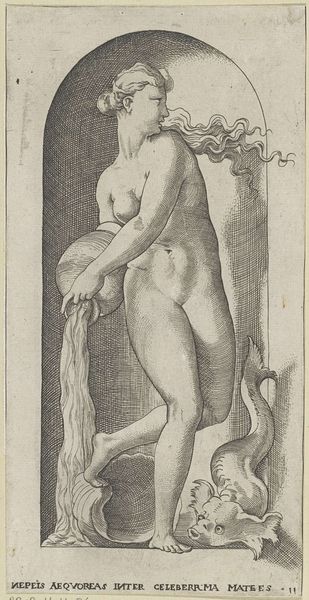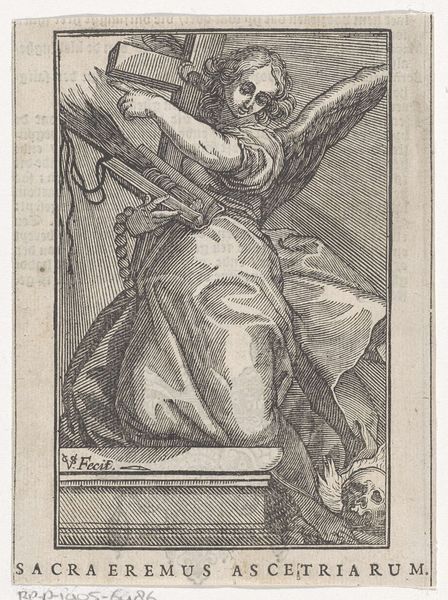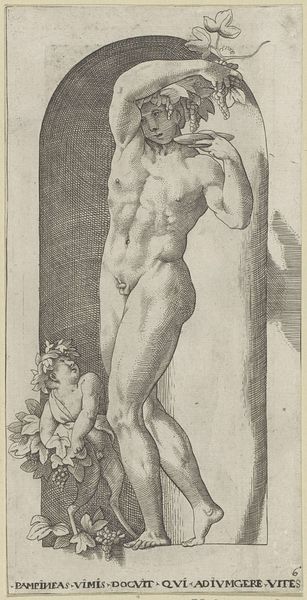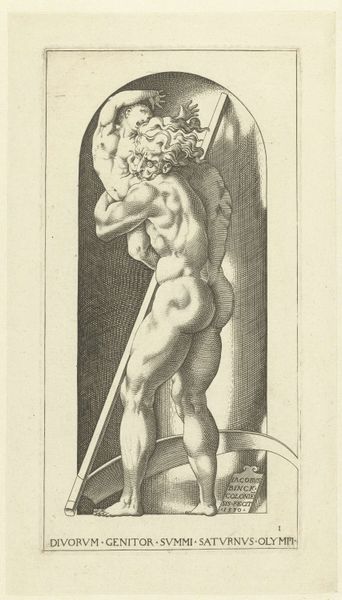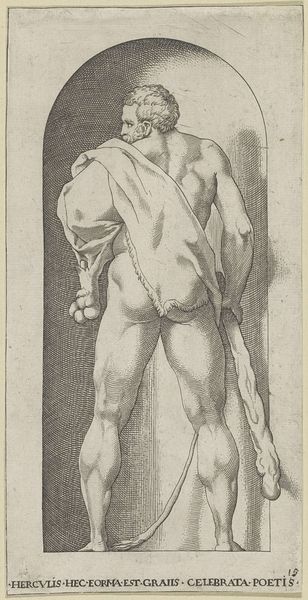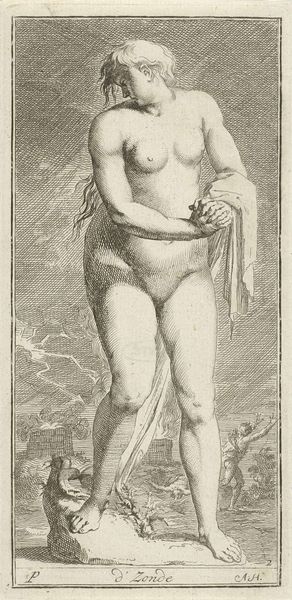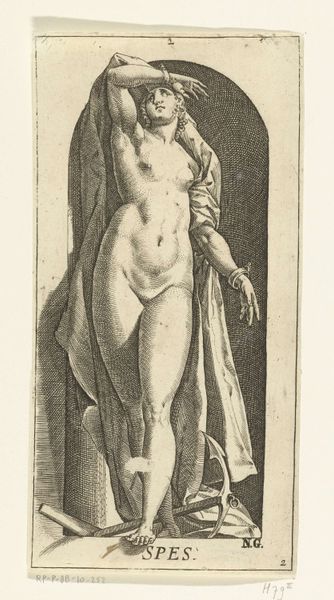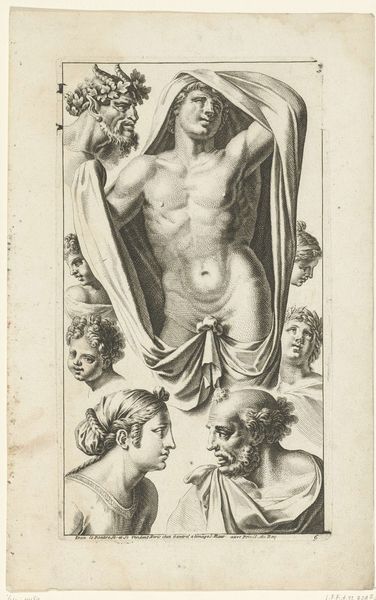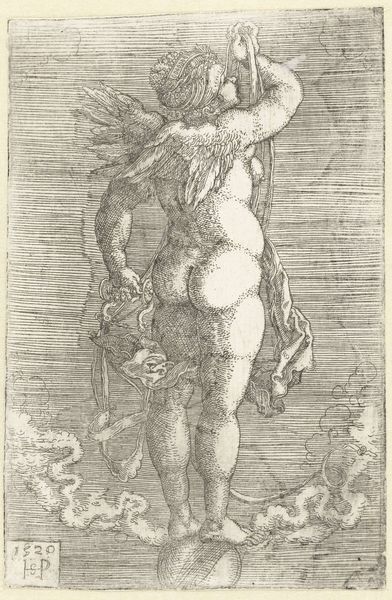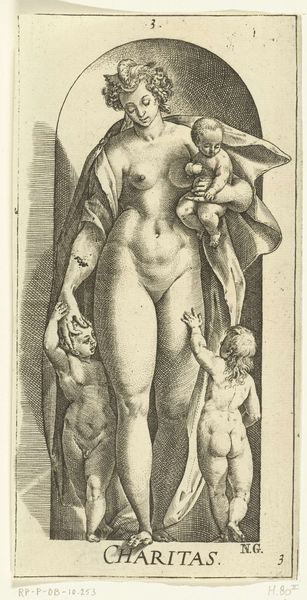
print, intaglio, engraving
#
allegory
#
baroque
# print
#
intaglio
#
old engraving style
#
figuration
#
form
#
history-painting
#
nude
#
engraving
Dimensions: height 211 mm, width 107 mm
Copyright: Rijks Museum: Open Domain
Editor: So, this print, "Voorzichtigheid," or "Prudence," by Hendrick Goltzius, likely created between 1578 and 1709, is striking in its detail. The nude figure and the snake especially give it a somewhat unsettling, almost confrontational mood. As a print, I find its sharp lines fascinating, I am curious: what's your interpretation of its historical context? Curator: Well, this print exemplifies the power of imagery in shaping cultural values. Think about the period: early modern Europe, where printmaking was disseminating ideas far and wide. "Prudence," personified as a female nude, wasn’t just about personal caution. Editor: Oh, I see. Curator: This depiction is linked to ideas surrounding governance, leadership, and societal order. Goltzius probably borrowed elements from classical allegories but gave them a distinctly contemporary spin. What's the effect of rendering Prudence nude, rather than draped and regal? Editor: Well, it's a more human and perhaps even a vulnerable interpretation. Is the serpent something she subdues or her own inner demons? It’s making me consider the public role of art: how could this image be a subtle directive to people, or leaders at the time? Curator: Exactly. The print circulates; it is reinterpreted and reproduced in varied forms. Each new viewing changes it, the art object being political in and of itself. Editor: This piece really opens my eyes to how something seemingly simple can reflect so much about a society's values and the mechanisms by which they spread. I’m learning it's never *just* about aesthetics, is it? Curator: Precisely. This has made me appreciate how the museum's role in preserving and contextualizing such prints helps to bring to light these subtle messages, for generations to come.
Comments
No comments
Be the first to comment and join the conversation on the ultimate creative platform.
